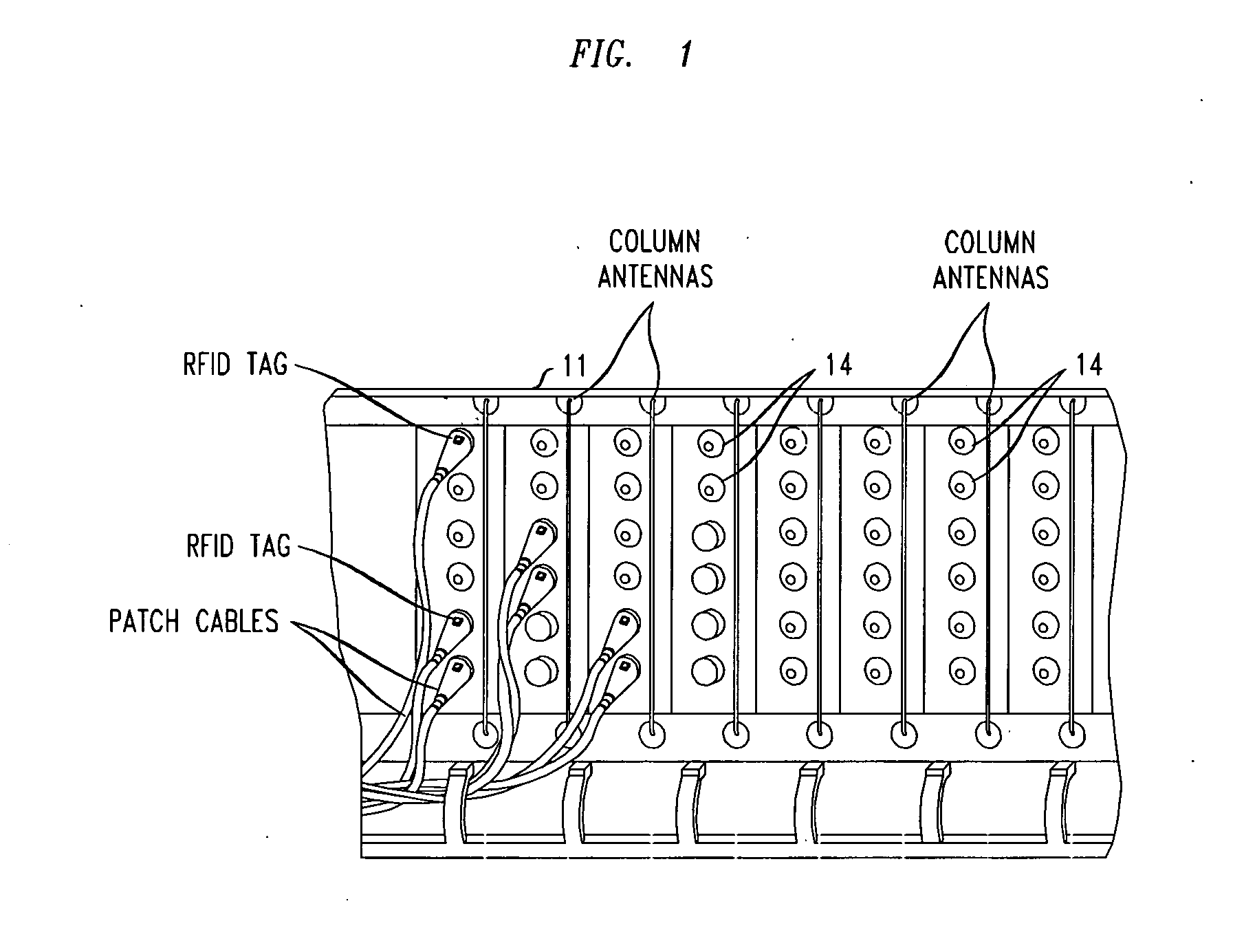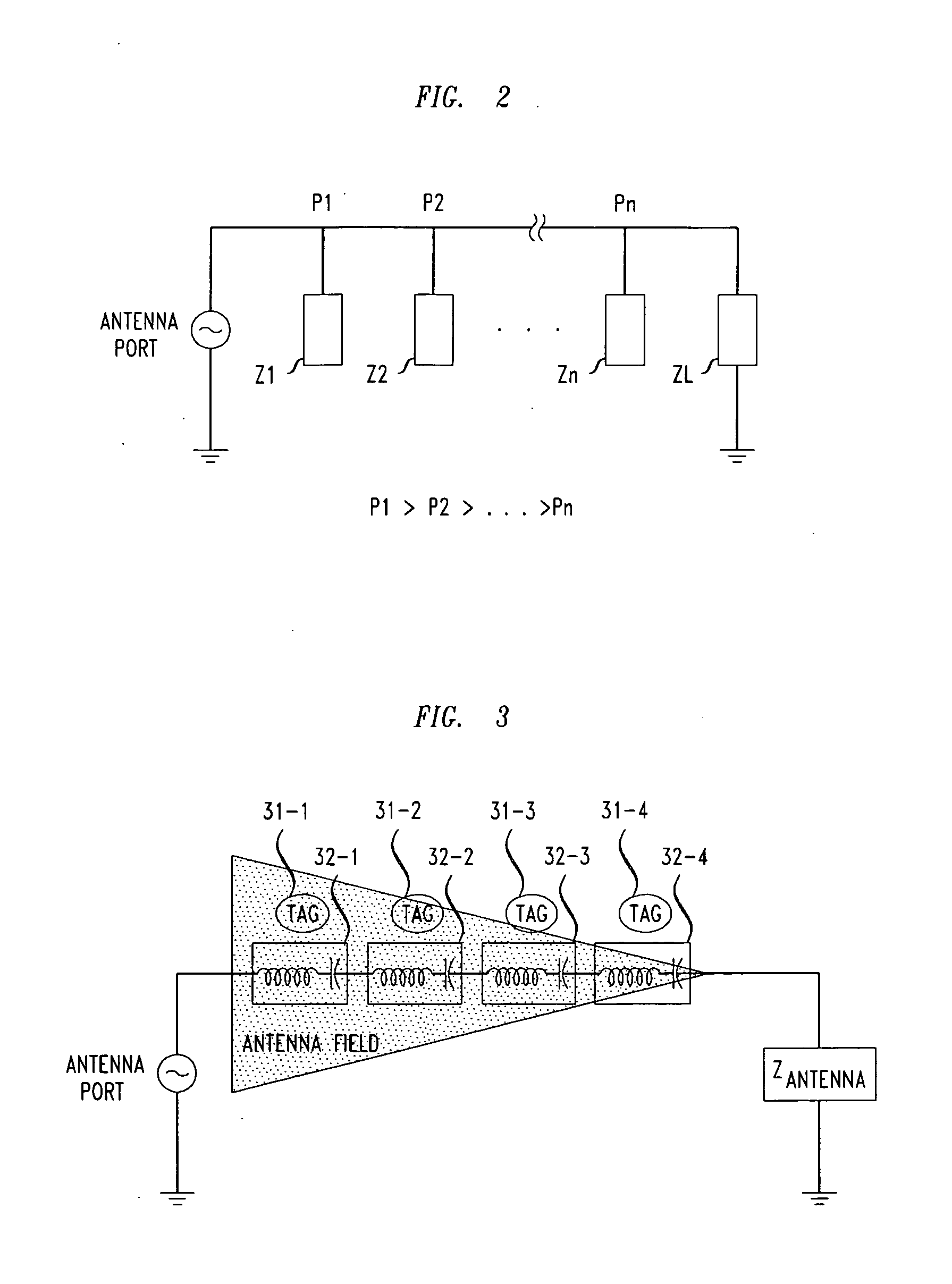Column based antenna array employing antenna field shaping for use in the automatic determination of network cable connections using RFID tags
- Summary
- Abstract
- Description
- Claims
- Application Information
AI Technical Summary
Benefits of technology
Problems solved by technology
Method used
Image
Examples
Embodiment Construction
[0015]FIG. 1 shows an example of an apparatus comprising a patch panel having a plurality of RFID column antennas for the automatic determination of network cable connections in accordance with an illustrative embodiment of the present invention. The illustrative apparatus comprises patch panel 11 which comprises a plurality of device ports 14 which are arranged in a rectangular configuration. As such, each device port can be identified in terms of a physical column (e.g., horizontal position) number and a physical row (e.g., vertical position) number. As can be seen from the figure, the particular illustrative patch panel shown has 48 device ports, arranged in 8 (vertical) columns and 6 (horizontal) rows. In addition, note that certain ones of the device ports have corresponding patch cables connected thereto, each of which has a cable end (i.e., a plug) which advantageously has an RFID tag attached thereto. (Such RFID tags are conventional and are fully familiar to those of ordina...
PUM
 Login to view more
Login to view more Abstract
Description
Claims
Application Information
 Login to view more
Login to view more - R&D Engineer
- R&D Manager
- IP Professional
- Industry Leading Data Capabilities
- Powerful AI technology
- Patent DNA Extraction
Browse by: Latest US Patents, China's latest patents, Technical Efficacy Thesaurus, Application Domain, Technology Topic.
© 2024 PatSnap. All rights reserved.Legal|Privacy policy|Modern Slavery Act Transparency Statement|Sitemap



